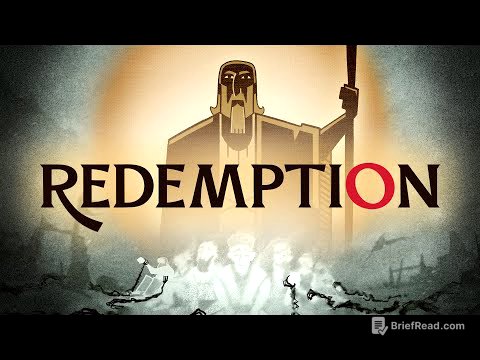TLDR;
This video provides an introduction to sets, including key concepts such as well-defined sets, null sets, elements of a set, and cardinality. It explains fundamental mathematical terms and illustrates these concepts with examples. The video aims to clarify the definition of a set, its components, and how to determine its properties.
- Definition of sets and their characteristics.
- Explanation of elements, well-defined sets, null sets, and cardinality.
- Examples to illustrate each concept.
Intro to Sets [0:11]
The video starts with an introduction to the concept of sets. The presenter outlines the topics to be covered, including the definition of sets, elements of a set, well-defined sets, null sets, and cardinality. The goal is to provide a clear understanding of what constitutes a set and its properties through various examples.
Basic Mathematical Terms [1:39]
The presenter reviews basic mathematical terms to ensure viewers understand the language used when discussing sets. These terms include integers (negative infinity to positive infinity, including zero), whole numbers (zero to positive infinity), counting or natural numbers (one to positive infinity), even numbers (multiples of 2), odd numbers (numbers not divisible by 2), prime numbers (numbers divisible only by 1 and themselves), composite numbers (numbers with more factors than just 1 and themselves), perfect squares (the product of a number multiplied by itself), multiples (skip counting), and factors (numbers that divide evenly into a given number). It's noted that 1 is neither a prime nor a composite number, it's a special number.
What is a Set? [7:15]
The presenter explains that a set is a group or collection of objects with the same characteristics or classification. Examples include a set of objects that can be worn (shoes, jacket, cup), a set of toys (ball, doll, toy car), and a set of fruits (mango, orange, banana). Sets are named using capital letters (e.g., Set A, Set B, Set C), and each object within a set is called a member or element. The symbol "∈" is used to denote that an item is an element of a set, while "∉" indicates that an item is not an element of a set.
Elements of a Set [11:31]
The presenter provides examples to illustrate how to identify and denote elements of a set. For instance, if Set A is the set of school days in a week, then Monday, Tuesday, Wednesday, Thursday, and Friday are elements of Set A. The notation "Monday ∈ Set A" signifies that Monday is an element of Set A, while "Sunday ∉ Set A" indicates that Sunday is not an element of Set A. Additional examples include Set B as the set of counting numbers less than five (1, 2, 3, 4) and Set B as the set of primary colors (yellow, red, blue).
Element or Not an Element [14:11]
The presenter provides exercises to determine whether a given number is an element of a specified set. For example, 2 is an element of Set A (even numbers), 7 is an element of Set C (counting numbers), -2 is not an element of Set C (counting numbers), 8 is not an element of Set B (odd numbers), 3 is an element of Set B (odd numbers), and 5 is not an element of Set A (even numbers).
Well-Defined Sets [16:40]
The presenter discusses the concept of well-defined sets, which are sets where the criteria for membership are clear and unambiguous. For example, the set of primary colors (red, blue, yellow) and the set of months in a year (January to December) are well-defined sets. In contrast, sets like "beautiful girls in school," "popular outdoor," and "excellent singers" are not well-defined because the adjectives "beautiful," "popular," and "excellent" are subjective and can vary from person to person. The presence of subjective adjectives typically indicates that a set is not well-defined.
Empty Set or Null Set [19:18]
The presenter defines an empty set (or null set) as a set with no members or elements. The symbols for an empty set are "{}" or "∅". Examples include the set of triangles with four sides, the set of months in a year that start with the letter "B," and the set of whole numbers less than zero.
Cardinality [21:39]
The presenter introduces the concept of cardinality, which refers to the number of elements in a given set. Cardinality is denoted by the symbol "n(A)," where "n" represents the number of elements and "A" is the name of the set. For example, if Set A is the set of primary colors (yellow, red, blue), then n(A) = 3. If Set B is the set of school days in a week (Monday to Friday), then n(B) = 5. If a set is empty, its cardinality is 0. For instance, if Set A is the set of days in a week that start with the letter "A," then n(A) = 0 because there are no such days.









